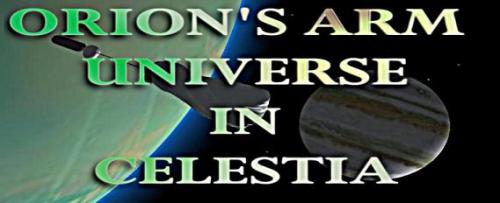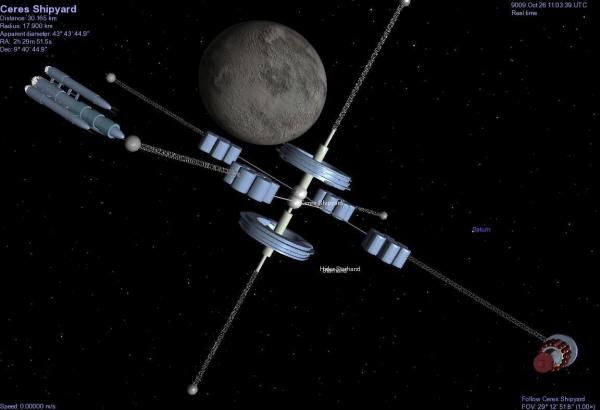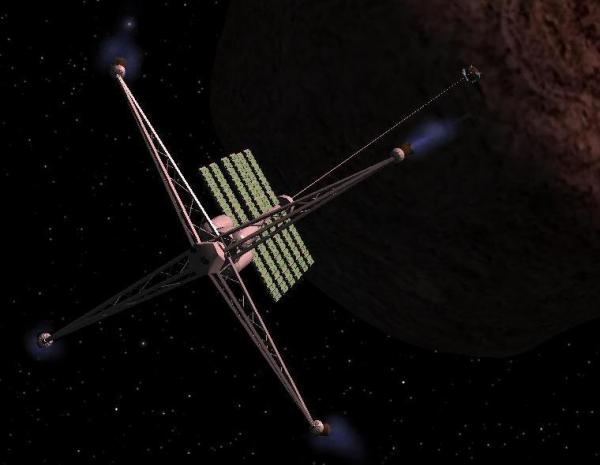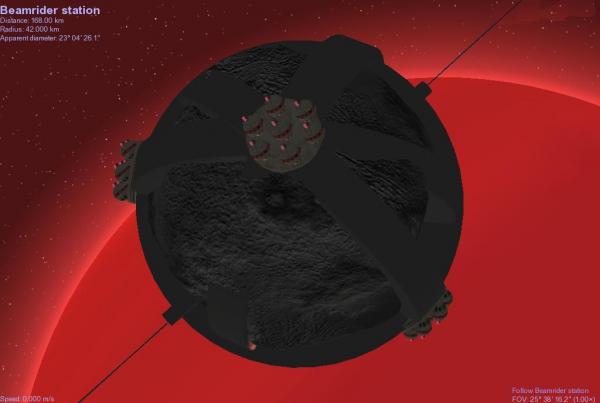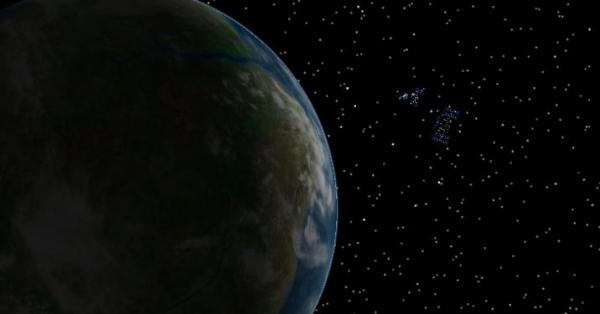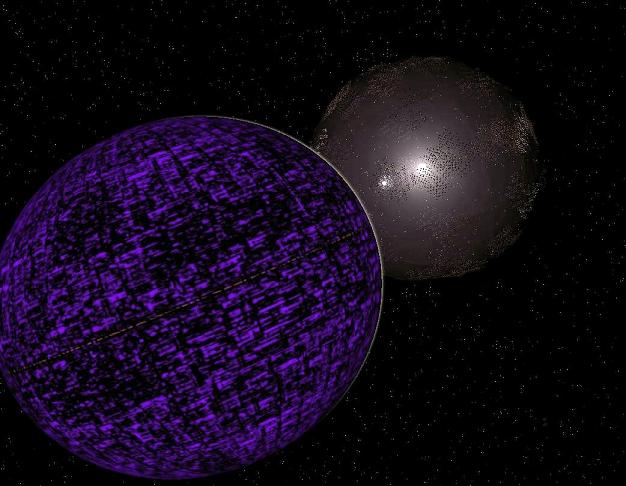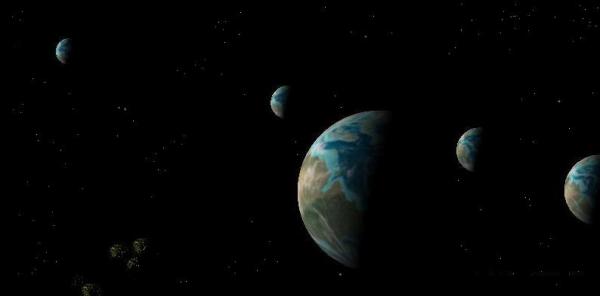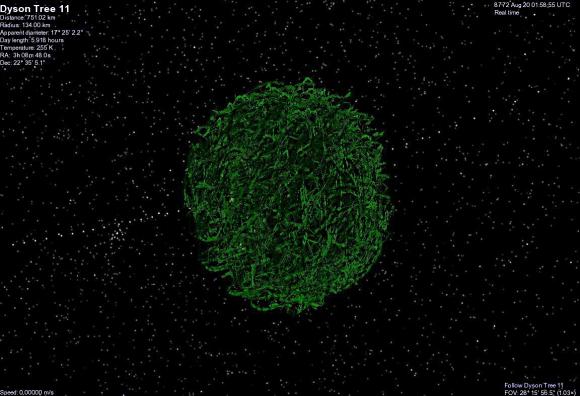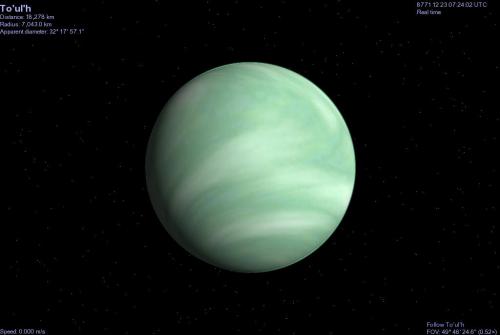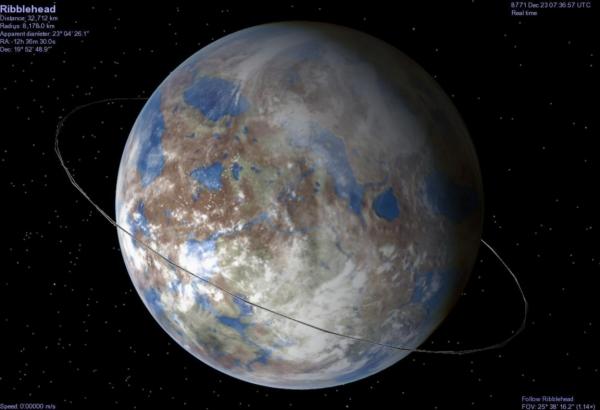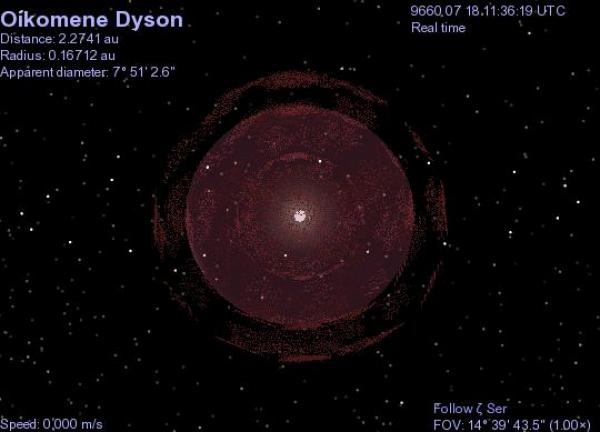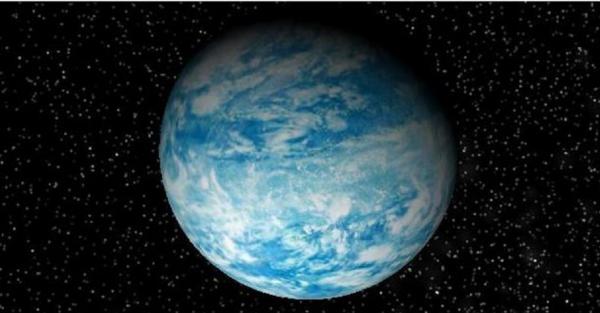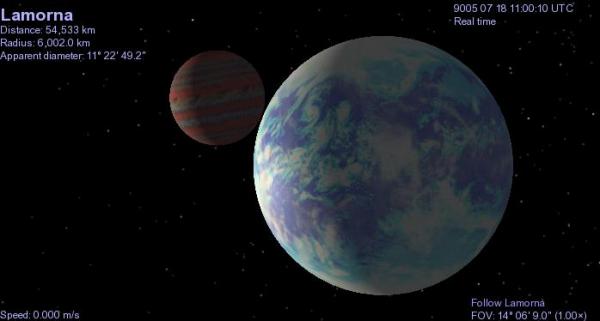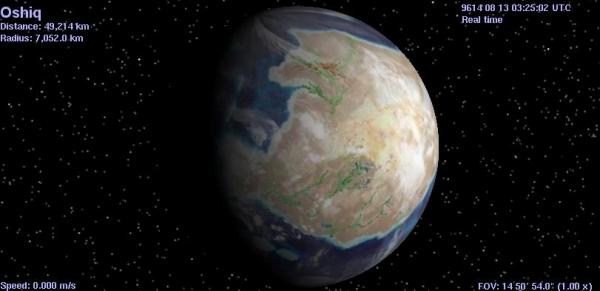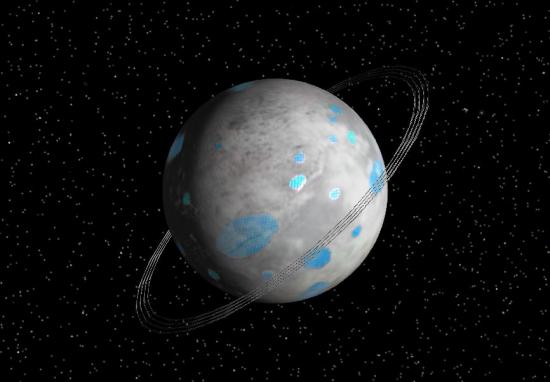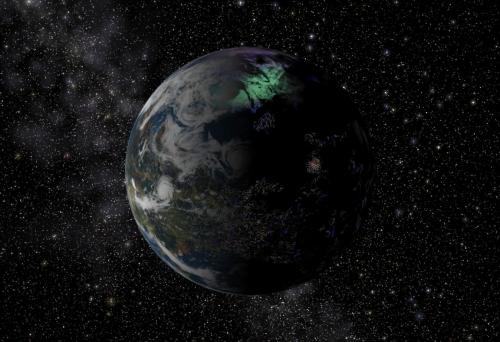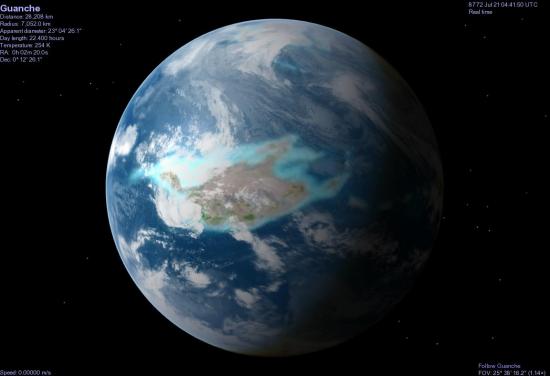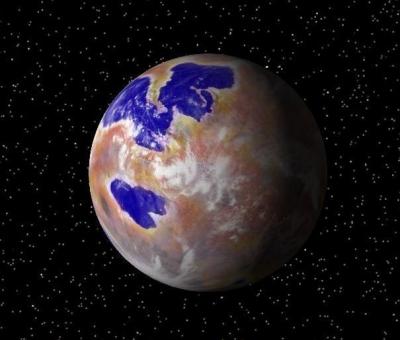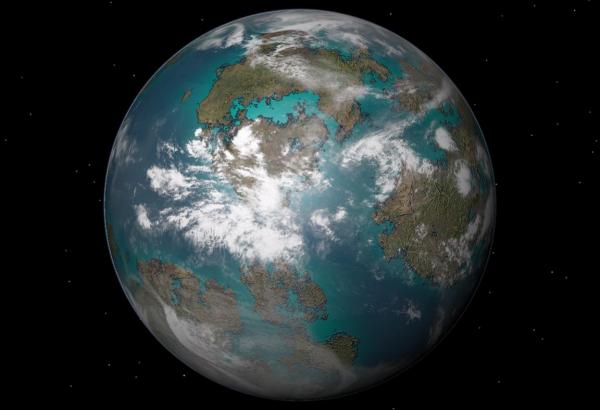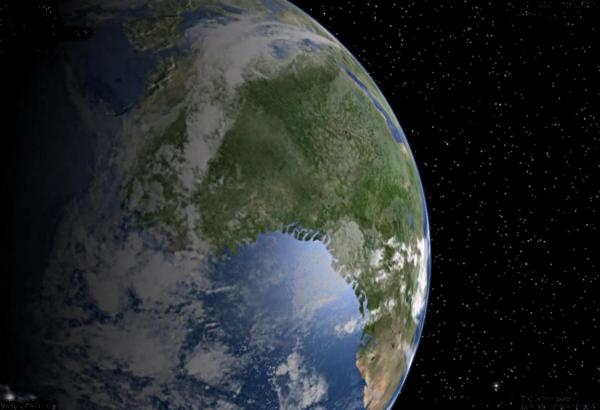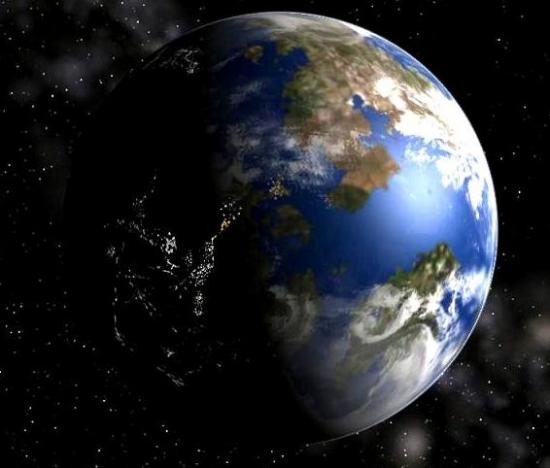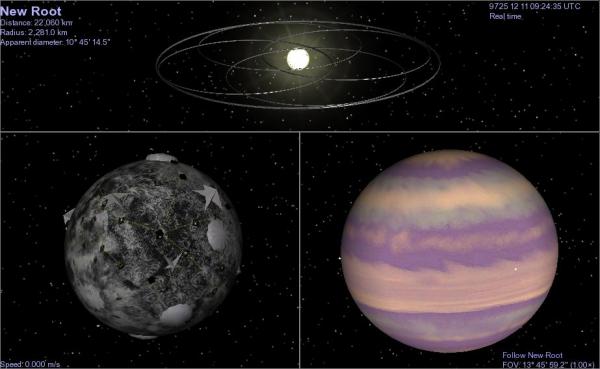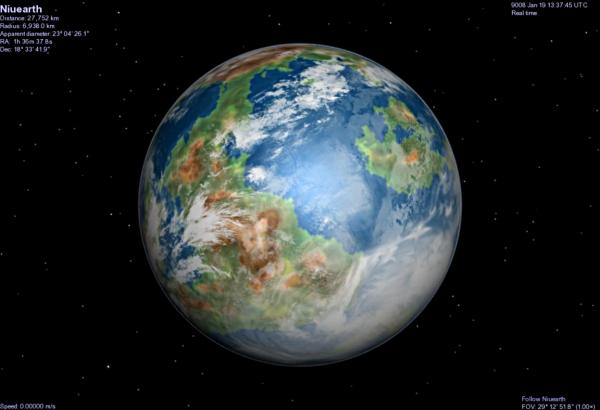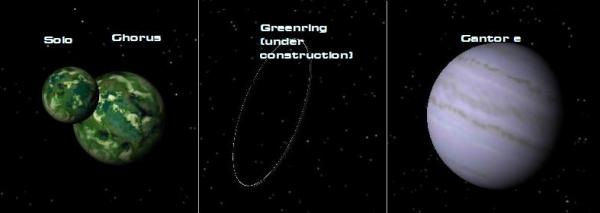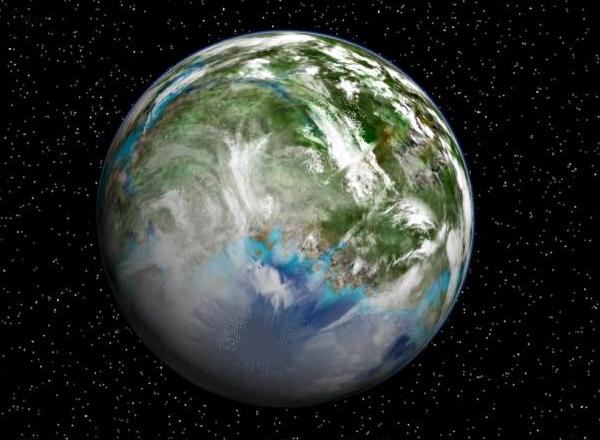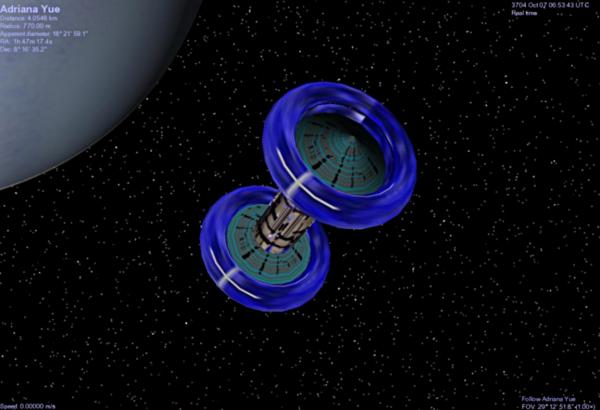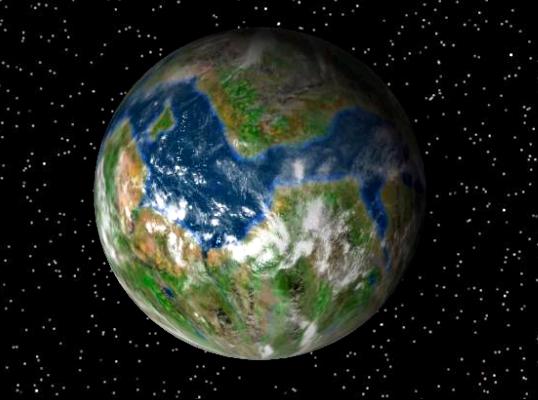The Orion's Arm Universe in Celestia
To explore the universe of Orion's Arm first download the 3D Astronomy program
Celestia. The best results will be obtained by using the newest version, Celestia 6 currently in beta testing, available here:
Celestia-1.6.0.exe/download Once you have downloaded the program take some time to become familiar with the controls (
this page from NASA shows the main functions very clearly).
To load the Orion's Arm addons you can download at least the first three of the OA Addons zip files shown below into the folder 'extras' inside Celestia
- OA Addons zip 1 - this small file contains the locations information for the Orions Arm systems
- OA Addons zip 2 - this large file (142 megs) contains the textures for the planets described in file 1. This may take some time to download.
- OA Addons zip 3 - this medium-to-large file (34 megs) contains some of the Orion's arm spacecraft and habitats.
Unzipping these three files into the '
Extras' folder will create a subfolder called '
oaaddons'; this folder will contain several subfolders, and will be the home for all the Orion's arm material. More addons are available on this page: (
Orion's Arm Addons Page 2)
Clickable Location Links
Once you have loaded these three files, you can explore the first of the Orion's Arm systems. The easiest way to do this is to click on a preset Cel:URL link, which will take you to a preset destination within Celestia. Cel:URL links are shown below in red; note they will not work properly until you have downloaded both Celestia and the appropriate addons.
Tip: you can have several different versions of Celestia on your system if you like, each with different sets of addons. If you have more than one version of Celestia these links may open the wrong version. So to ensure the links work correctly open the correct version of Celestia first. If you have only one version of Celestia. opening it first will help speed it up in any case.
Let's start with the Solar System; here is the cargo ship
Almucantar, making its way through the asteroid belt.
Clickable Cel:URL for this object
Ceres, the dwarf planet has a long established shipyard where many famous craft were built.
Clickable Cel:URL for this object
Now to the nearest stars; the red dwarf known as
Barnard's Star has a large asteroid belt, full of spacecraft and habitats. Sometimes it is necessary to move the asteroids in Barnard's Belt; here a pair of
gravity tugs arranged in tandem are gently pulling this colonised rock to a new orbit.
Clickable Cel:URL for this object
Now to the system of Epsilon Indi; this is the terraformed world
Tierra del Fuego, home of the famous cloned House Stevens.
Clickable Cel:URL for this object
Other worlds in this system include
Malvina and
Deep Red Epsilon Indi has two brown dwarf companions, both colonised by the Deeper Covenant; here is one of their habitats in orbit around the dwarf failed star Eps Ind Bb.
Clickable Cel:URL for this object
The Deeper Covenant use the
Beamrider system of interstellar travel; here is a beamrider ship spreading its magsail to catch the smart particle momentum beam.
Clickable Cel:URL for this object
Orbiting the star Delta Pavonis we find the planet
Darwin; this is an example of the rare class of worlds with indigenous biospheres, and is now protected by a Caretaker God.
Clickable Cel:URL for this object
The nearby star Gamma Pavonis holds the terraformed world
Zarathustra, a world with a turbulent past
Cel:URL The system of Delta Capricorni is the capital of the transapient empire of Keter, and is now known as
Ain Soph Aur. Here is the Jupiter Node Sagan, a vast artificial world dedicated to data processing
Cel:URL Bolobo is a small, paraterraformed world in the system HIP 107649; the atmosphere is retained by a transparent worldroof.
Cel:URL Ecotopia is the capital of the Zoeific Biopolity, and includes more than 300 artificial planets in a ring formation, each with a different experimental biosphere
Cel:URL In the Ecotopia system are many Dyson Trees, genetically modified space-adapted plants which are used as habitats
Cel:URL The first intelligent alien species ever contacted was found on To'ul'h Prime, more than a thousand light years from Sol. This world has a hot, wet, thick atmosphere and is inhospitable to unmodified humans.
Cel:URL Ribblehead is a large, carbonaceous planet which has been transformed into a lo-tech reserve, while a high-tech City ring orbits and monitors the world from above
Cel:URL Deucalion is a Mars-like world which has been terraformed in much the same way as Mars itself. The world has a rich artistic culture.
Cel:URL Zeta Serpentis (Oikoumene) is surrounded by a massive Dyson Swarm, mostly consisting of pyramidal processing nodes collecting the light from this bright star.
Cel:URL Panthalassa is a large waterworld, with oceans hundreds of kilometers deep; many water dwelling clades live on this world.
Cel:URL Lamorna is a waterworld in the Zennor system; this was originally an ice ball moon, but has been artificially heated to support water dwelling life.
Cel:URL Oshiq is a postgaian world, rapidly losing its water due to a wet greenhouse effect. Here a Skylark-class ship orbits the world
Cel:URL Sisyphos is a Chthonian type world, a gas giant so close to its star that it has lost most of its atmosphere. Only highly specialised clades can live here.
Cel:URL Merrion (Alpha Mensae XII) is the capital world of the NoCoZo empire; a cold world covered in environmental domes and honeycombed with underground cities.
Cel:URL Corona (Iota Piscium I) was the capital of the Taurus Nexus; it is named for the brilliant aurorae which play almost constantly at the poles.
Cel:URL Guanche was at one time cut off from galactic civilisation and became a lost colony, with bronze age technology.
Cel:URL However the world rebooted its civilisation with the help of the Encyclopedia Everythingiana.
Stanislaw is the site of a machine ecology. The origin of this mechosystem is still debated - it may be of alien origin, or the product of a wandering Terragen AI God
Cel:URL Dionysos (56 Aurigae II) was the centre of the Dionysian Erotocracy, an influential early interstellar metaempire
Cel:URL The star Rana holds the twin planets Bill and Bull, and was the centre of the vanished culture Vore Abergism
Cel:URL The predominantly cyborg culture of Oia has developed new standards of beauty, not all of which are shared with other cultures.
Cel:URL - Fira, a planet in the Oia system, is near the star and tidally locked; a fierce asymmetric atmospheric rotation distributes the heat to the dark side of the planet
Cel:URL New Earth (104 Tauri) has been reshaped to resemble the original home of Humanity in the Solar System; however some details are different, such as the famous fjords of New Africa
Cel:URL - Daksha in the New Earth system is a typical jovian world, in approximately the same position as Jupiter occupies in the Old Solar System.
Cel:URL Trees (HIP 3170) holds an indigenous and complex biosphere, including gigantic tree-like organisms and the intriguing Pspyder species of near-sentient animals
Cel:URL Harmonic-Resonance (JD10013) is a double planet or Rocheworld, terraformed by Edenese superiors in 2805 a.t.
Cel:URL Bourgatov was at one time the capital of the Second Federation, but it was devastated during the Version War
Cel:URL Blue is a waterworld in the Seams, part of the widespread empire ruled by the Burdikeer
Cel:URL New Root is the capital of the Metasoft Version Tree; this world is not hospitable to unprotected humans, but suits the Moravec robots (Vecs) of that empire very well.
Cel:URL Niuearth is a human baseline reserve world in the Metasoft volume; the vecs of that empire like to keep a population of unmodified humans safe, for reasons of their own.
Cel:URL The Metasoft Embassy in the Hiederia system is a strange and beautiful sight
Cel:URL Other worlds in this system include
Redunin and
Grishelda The worlds of Chorus and Solo hold an alien chlorine-rich biosphere and is the home of the intelligent species known as the
Jade Chime Singers
Cel:URL Muuhhome is a Titan-like moon which was the first world where humanity encountered the ancient Muuh race; a slow, cold crab-like species
Cel:URL Lancer's World in the Outer Volumes is covered by a space canopy plant ; this world also has an interesting transport infrastructure
Cel:URL Pluton is a depleted ice core world, with a large strip of paraterraformed environment surrounding its equator. The red domes of several independent Muuh colonies can be seen.
Cel:URL Audubon was the first world colonised by the Engenerator system a method which had some initial problems but has been used to good effect in more recent millennia
Cel:URL The Adriana Yue, a displacement drive vessel using high transapient reactionless technology
Cel:URL Daffy is one of the seats of the Negentropy Alliance
Cel:URL
See Also
Orion's Arm Addons Page 2 and
Orion's Arm Addons Page 3 and
Orion's Arm Addons in Celestia page 4
